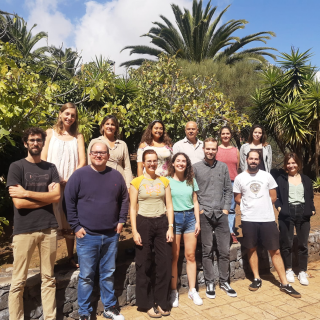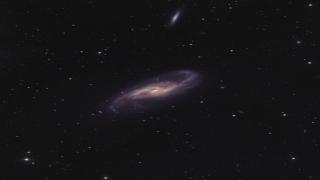Bibcode
Sánchez, S. F.; García-Benito, R.; González Delgado, R.; Conrado, A.; Perez, I.; Lugo-Aranda, A. Z.; Sánchez-Menguiano, L.; Ruiz-Lara, T.; Jiménez, A.; Duarte Puertas, S.; Domínguez-Gómez, J.; Torres-Ríos, G.; Argudo-Fernández, M.; Blázquez-Calero, G.; Alcázar-Laynez, M.; Verley, S.; Espada, D.; Lisenfeld, U.; Zurita, A.; Florido, E.; Bidaran, B.; Villalba-González, P.; Ferré-Mateu, A.; Sánchez Alarcón, P. M.; Román, J.; del Moral-Castro, I.; Agüi, F.
Bibliographical reference
Revista Mexicana de Astronomia y Astrofisica
Advertised on:
10
2024
Citations
0
Refereed citations
0
Description
We present the analysis using pyPipe3D of a sample of 208 galaxies from the CAVITY project , that includes: (i) a description of the processes performed by this pipeline, (ii) the data model adopted to store the spatially resolved properties, and (iii) a catalog comprising integrated and characteristics properties, and the slope of radial gradients for various observational and physical parameters determined for each galaxy. We elucidate the analysis outcomes by (i) presenting the spatial distribution of various derived parameters for a representative galaxy, CAVITY66239, and (ii) exploring the integrated extensive and intensive scaling relations that rule star-formation for this galaxy sample, comparing with results from the literature. The individual galaxy data products for the galaxies featured in the inaugural data release of the CAVITY project, along with the catalog described in this article, are available at the 1st Data Release webpage.
Related projects

Traces of Galaxy Formation: Stellar populations, Dynamics and Morphology
We are a large, diverse, and very active research group aiming to provide a comprehensive picture for the formation of galaxies in the Universe. Rooted in detailed stellar population analysis, we are constantly exploring and developing new tools and ideas to understand how galaxies came to be what we now observe.
Ignacio
Martín Navarro

Spiral Galaxies: Evolution and Consequences
Our small group is well known and respected internationally for our innovative and important work on various aspects of the structure and evolution of nearby spiral galaxies. We primarily use observations at various wavelengths, exploiting synergies that allow us to answer the most pertinent questions relating to what the main properties of
Johan Hendrik
Knapen Koelstra